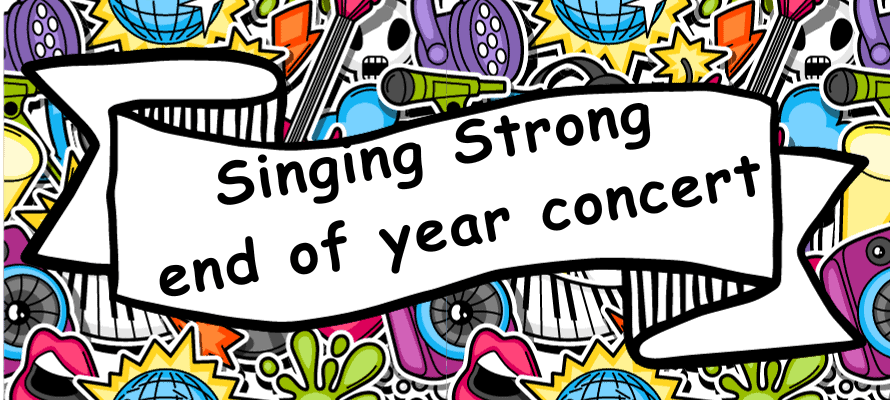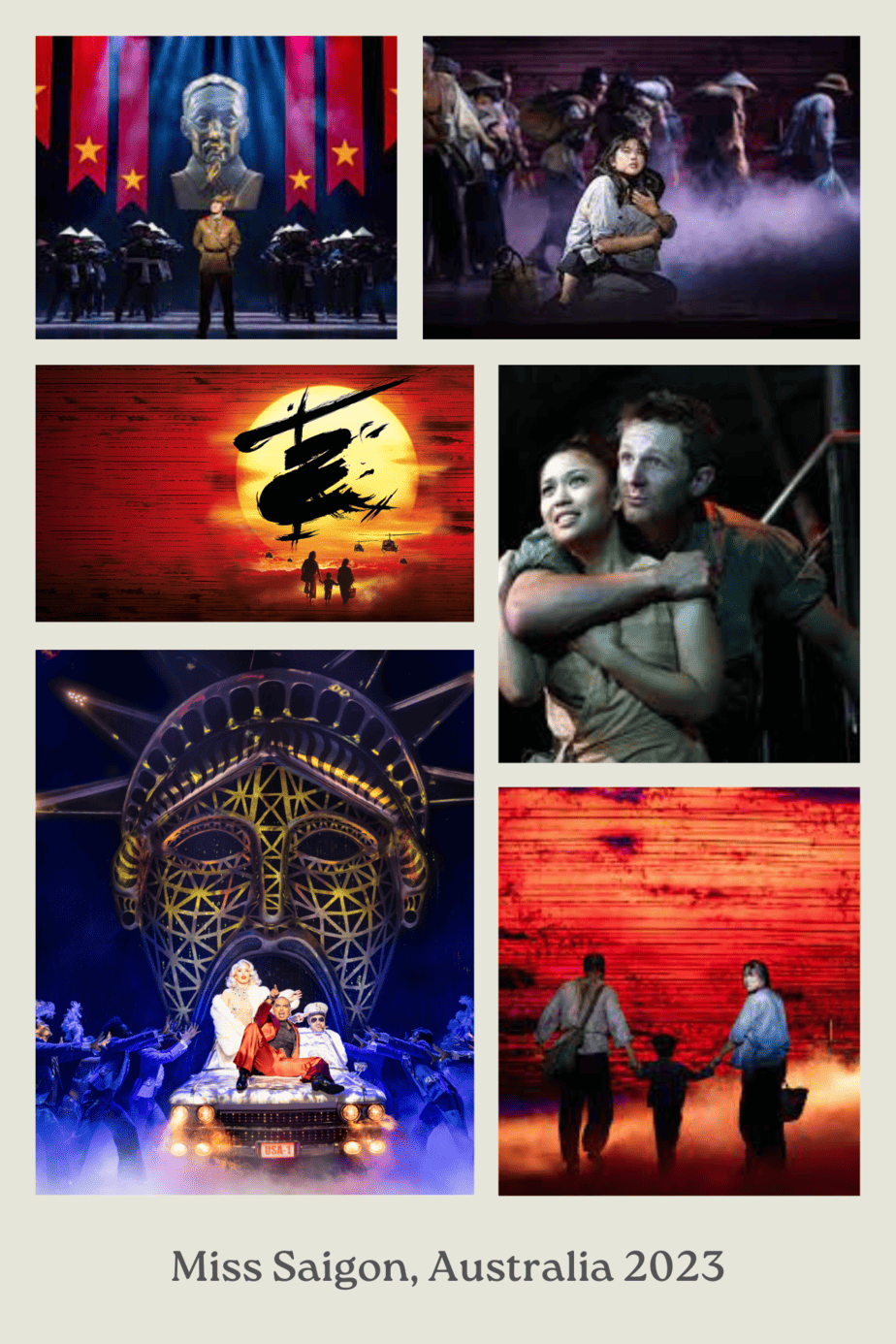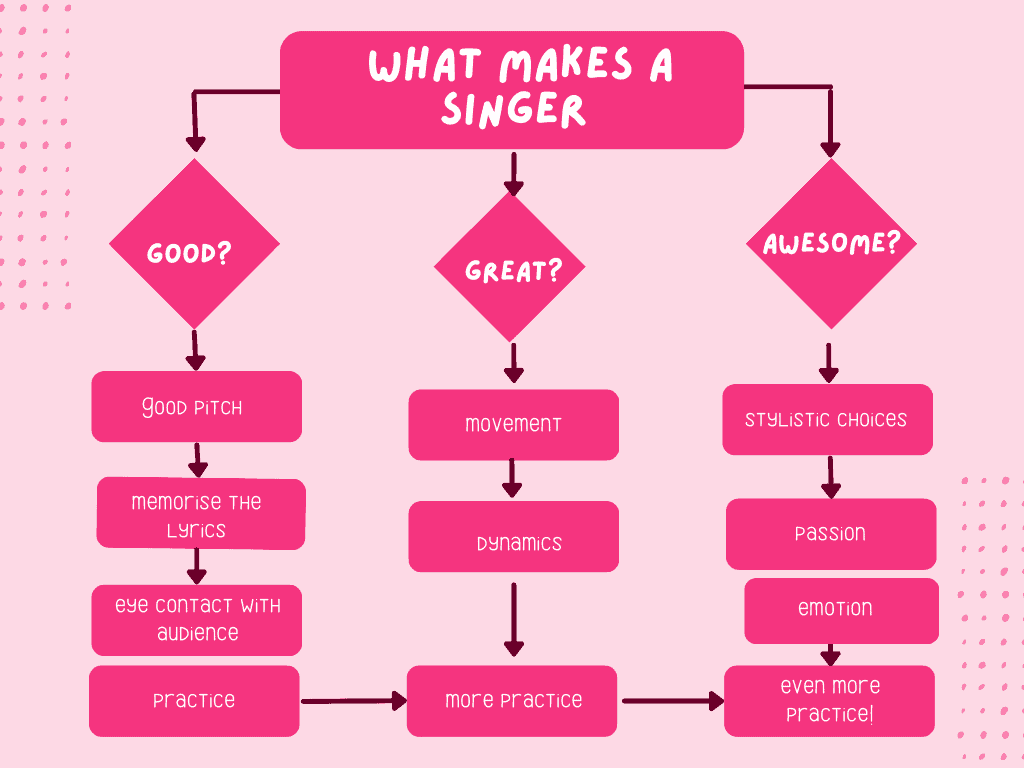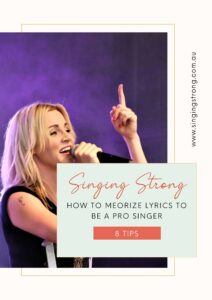Author Archive: admin
Singing when unwell
Singing when unwell can be challenging, but there are ways to minimize strain and still perform effectively. Here are four tips to help you manage:
1. Stay Hydrated
- Drink Water: Keep your vocal cords well-lubricated by drinking plenty of water. Aim for room temperature or warm water, as cold water can constrict your vocal cords.
- Avoid Caffeine and Alcohol: These can dehydrate you and irritate your throat.
- Steam Inhalation: Inhale steam from hot water to soothe and hydrate your vocal cords. You can add a few drops of eucalyptus oil for added relief.
2. Warm Up Gently
- Gentle Warm-Ups: Do gentle vocal exercises to warm up your voice. Start with humming or lip trills to get your vocal cords moving without too much strain.
- Avoid High Notes: Refrain from singing high or loud notes during your warm-up. Focus on the comfortable part of your range to avoid further irritation.
3. Modify Your Technique
- Sing Softer: Reduce the volume to avoid putting too much pressure on your vocal cords. Use a microphone to help project your voice if needed.
- Focus on Breath Support: Use proper diaphragmatic breathing to support your voice and reduce strain on your throat.
- Articulation and Diction: Enunciate clearly to ensure your words are understood without having to push your voice.
4. Rest and Listen to Your Body
- Vocal Rest: Limit speaking and singing outside of necessary performances to give your voice a chance to heal.
- Listen to Your Body: Pay attention to how your voice feels. If you experience pain or significant discomfort, it’s best to rest entirely and seek medical advice if necessary.
- Avoid Whispering: Whispering can strain your voice more than speaking softly, so try to speak in a normal, quiet tone instead.
Taking these precautions can help you preserve your voice and reduce the risk of further damage when you’re not feeling your best.
Pop songs for boys under 10
Teaching boys under the age of 10 to enjoy singing lessons and singing.
- Start with Fun and Playful Exercises: Introduce singing through fun exercises that engage their imagination and playfulness. Games like “Simon Says” where they mimic vocal sounds or animal noises can be great warm-ups. Encourage them to sing along to their favorite songs or cartoons, making it enjoyable and natural.
- Provide Positive Encouragement: Building confidence is crucial at this age. Offer plenty of positive reinforcement and encouragement. Celebrate their efforts, no matter how small, and focus on progress rather than perfection. Create a supportive environment where they feel safe to explore their voice without fear of judgment.
- Incorporate Visual and Kinesthetic Learning: Young boys often respond well to visual and kinesthetic learning. Use visual aids like diagrams of vocal anatomy to explain concepts in a simple and engaging manner. Encourage physical movements that help with breath control and vocal projection, such as stretching or pretending to blow bubbles. Incorporating movement into singing can make it more dynamic and enjoyable for them.
By combining these approaches, you can make learning to sing a fun and rewarding experience, setting a strong foundation for their musical journey ahead.
The following songs are popular, catchy, and have relatively simple melodies and lyrics, making them suitable for young boys to sing along with and enjoy.
Number One: Hound Dog by Elvis Presley
This is a very repetitive song and has a small vocal range, making it very easy for young boys to learn quickly, sing and enjoy.
Number Two: Here comes the sun by the Beatles
Always check the key the song is in and if that key suits the child. Sometimes you may need to raise the key to make it easier to sing in their vocal range. Remember, these voices are still immature and they don’t have the vocal chords that an adult male has, meaning they are not yet able to sing really low notes.
Here is the Beatles version, as well as the same song in a higher key.
Number Three: Count on me by Bruno Mars
Number Four: Rip Tide by Vance Joy
Number Five: Kung Fu Fighting by Carl Douglas
Number Six: It’s a good day to have a great day by Russell Dickerson
click on CC (closed captions) to see the lyrics
Number Seven: Can’t stop the feeling by Justin Timberlake
Number Eight: Footloose by Kenny Loggins
Number Nine: Fireflies by Owl City
Number Ten: Lanterns by Birds of Tokyo
Number Eleven: Crocodile Rock by Elton John
Number Twelve: Best day of my life by American Authors
How do I sing high notes?
Singing high notes requires a combination of proper technique, practice, and understanding your vocal range.
Here are five essential steps to help you sing higher:
- Warm-up and Vocal Exercises: Before attempting to sing high notes, it’s crucial to warm up your voice. Start with gentle humming or lip trills to loosen up your vocal cords. Then, do vocal exercises that focus on expanding your vocal range gradually. These exercises could include scales, arpeggios, and sirens. Consistent practice of these exercises will help strengthen your voice and increase your ability to hit higher notes.
- Proper Breathing Technique: Proper breathing is essential for singing high notes effectively. Practice diaphragmatic breathing, where you breathe deeply from your diaphragm rather than shallowly from your chest. Engage your abdominal muscles to support your breath, allowing for better control and power when reaching for higher pitches. Learning to control your breath flow is key to sustaining high notes without strain.
- Relaxation and Posture: Tension in your body can hinder your ability to sing high notes comfortably. Maintain good posture by standing or sitting up straight, with your shoulders relaxed and your chest open. Tension in your neck, jaw, or throat can restrict airflow and make it harder to reach higher pitches. Practice relaxation techniques such as deep breathing and gentle stretches to release tension before singing.
- Head Voice and Mixed Voice: Understanding the different registers of your voice is crucial for singing high notes. Your head voice is the lighter, higher register of your voice, while your chest voice is lower and fuller. Work on transitioning smoothly between these registers to achieve a balanced and connected sound in your high notes. Developing a mixed voice, which combines elements of both head and chest voice, can help you maintain a strong and controlled sound throughout your vocal range.
- Consistent Practice and Patience: Like any skill, singing high notes takes time and dedication to master. Practice regularly, but be patient with yourself as you work on expanding your vocal range and improving your technique. Record yourself singing to track your progress and identify areas for improvement. Seek feedback from a vocal coach or experienced singer who can provide guidance and help you develop a healthy and sustainable approach to singing high notes. Remember to listen to your body and avoid pushing your voice beyond its limits to prevent strain or injury. With consistent practice and proper technique, you can gradually increase your ability to sing high notes with confidence and ease.

Singing Strong end of year concert

This concert will be an opportunity to sit back and enjoy an evening of a wide range of styles of music as well as supporting singers in their musical journey, wherever that may be.
Billie Eilish
Hi! it’s Mary from Singing Strong and welcome.
Today I wanted to talk a little bit about Billie eilish’s new song, “What was I made for?” from the Barbie movie. I have not been to the Barbie movie, I haven’t had time to go and see it yet. I’ve had lots of people telling me it’s a great movie and I plan on going to see it, but there’s some great music out of this movie, in particular the song “What was I made for?”
Billie Eilish and her brother Phineas are great songwriters, they are so well versed in using music that appeals to a wide audience. I respect the work. I have a personal reason:
One: because I am a soprano and I love to sing higher.
Two: it’s not belted. Everyone talks about belting, we’re going to belt music everything has to be yelled and yes that’s good to a point, but it’s only one feature of the whole voice.
When I first heard the song I was just thrilled that she was using a light soprano voice to sing this song. Now having said that she has made a stylistic choice and I think it has a lot to do with the style of the song, you know being with Barbie dolls as a child or you know that Barbies, these were around when I was young, so I think she added all the breath personally, I think it’s a creative thing of history or nostalgia and looking back. That’s my interpretation. When they recorded that, you have to think about what is happening that she has an incredible lot of air over the vocal chords and that is going to challenge you. I would question how many times did she do each section? How long did she have in between the takes. Did she have breaks for the voice? She could have done it in only one take, but it would be very taxing on the voice, pushing so much air. You have to remember she’s in front of the microphone, it’s really close and the technology we have now to be able to you know manipulate the sound and create what they wanted to achieve.
Thank you Billie Eilish for encouraging young voices to sing with a high light soprano voice. Music and singing doesn’t always have to be pushed or belted.
Seeing Miss Saigon at the Sydney Opera House

Hi it’s Mary from Singing Strong. I had a lovely excursion to Sydney a couple of weekends ago for my daughter’s 22nd birthday. We had the most wonderful time in Sydney I haven’t been there for, I’m trying to think, it’s been over 20 years, so I’m starting to give away my age a little bit here, but that’s okay. We went to Sydney and we got to walk around circular Quay. We walked around the Opera House and walked around to Sydney Harbor Bridge. This was amazing. I always love to watch the fireworks on New Years Eve from Sydney, so it was lovely to actually walk around there. We also went to Bondi Beach. My daughter is a Bondi Rescue fan and we went there and had a look at all of the area of Bondi Beach. We also went to Manly on the Sunday which was the most beautiful weather but incredibly busy, Sydney is just exploding with people, but it was really lovely, we had a great day.
We went to the Opera House on the Saturday night to see Miss Saigon. Miss Saigon has been around since the 1980s, but I had never seen it for whatever reason I didn’t manage to get to see it. It’s composed by the same people who composed Les Miserables. It is very different but musically as exciting as Les Miserable. If you haven’t seen Miss Saigon I would highly recommend it. Now it was very confronting I have to say, but the music was amazing. The young girl who played the role of Kim is literally 18 years old and has been plucked out of the obscurity and she was just incredible. The thing that I really valued and got so much enjoyment from even though it’s an incredibly sad story was the calibre of the singing and I have to say well done Opera Australia for putting this on. The singing was just world class, and I can say that honestly because I have been to a few different places around the world. The technicians are to be congratulated on the sound quality, there was so much going on in this show but it was just fantastic. The singing was incredible.
Now I know a lot of people are not so much music theatre fans and prefer contemporary pop music and that sort of thing and there’s nothing wrong with that, there’s some great singing. I’m going to be talking about that in the future, how pop singing is just amazing, but this night, I don’t know whether it was just the thrill of being at the Opera House. It was such high quality singing, so well-rehearsed, such strong powerful in control voices that could sing a huge dynamic range who were singing, this incredibly low music and then she has this beautiful high soprano coming through on some of the songs, it was just amazing. The show is coming to an end in Sydney, but it’s coming to Melbourne so if you are a person who lives in Victoria and you haven’t seen it I would highly recommended it. It is not for children, it’s like I said incredibly confronting. We just need to be careful with what we are exposing our children to. If you haven’t seen Miss Saigon you must go. I’m not going to do any spoilers, not going to tell you that the actual show itself because there’s some incredible things that happened on the stage that just flew my mind.
Well done to the production team and everyone who was involved. I’ve seen a lot of shows in the last 12 months now that we’re out of covid. I’m trying to go and see everything and I have to say out of all the shows that I’ve seen recently that is like number one at the top, can’t get any better, at the moment I to find a show that is a higher level vocally. It just blew my mind. if you are in Victoria and have an opportunity it starts on 29th October. It’s not that far away, please go and see it, you will absolutely love it. As I said it is very confronting, very sad, but just an amazing show. Please go and see it. You can watch it online, but I just don’t think you get the same experience. There’s something about live theatre that you get a totally different experience.
Well done everyone at Opera Australia, I loved it.

What makes a good, great, awesome singer?
I recently held a performance workshop with my singing students. In the video below I talk about what we discussed when it comes to being a good, great or awesome singer. The list we came up with is just the beginning, I am sure you can think of lots of things that would go into each category. This is to get you thinking about what makes the difference between something that is okay, to something that you go home talking about to everyone you meet.

This is a performance of Adele from 12 years ago. Simple but powerful!
Watch what happens just after the 1 minute mark. Adele is human, just like all of us.
Seagulls?
How can seagulls help you sing high notes?
I had been working with a student the other week who was having a real struggle with accessing their upper register. There was a lot of straining and tightness going on which was preventing them from singing the higher notes. I suggested they try making the noise like the seagull from Finding Nemo, and hey presto! they could suddenly access those high notes.
I think if someone walked past my voice studio some days they would think we were crazy. However it may take a different way of thinking to help solve a problem.
If you are having difficulty with high notes, why not give it a try?

